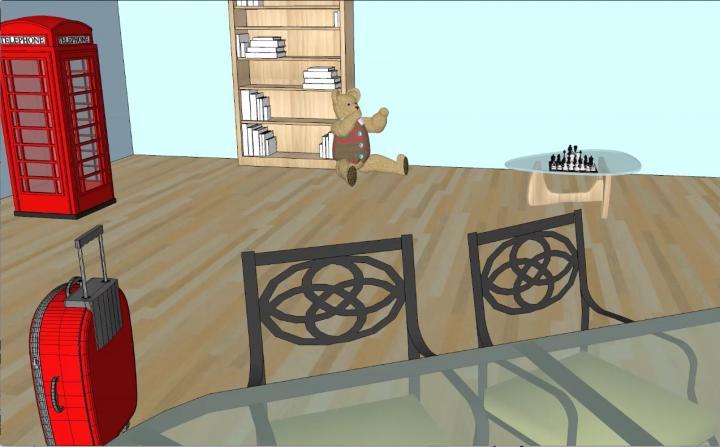UC Davis neuroscientists are using virtual reality to investigate how memories are organized. Graduate student Halle Dimsdale-Zucker showed subjects movies created with virtual sketching software and asked them questions about objects inside the houses. She was able to show that different regions of a brain structure called the hippocampus play different roles in remembering items in context. Credit: Halle Dimsdale-Zucker, UC Davis
MoreAnnouncement
2023-12-22
The International Youth Conference of Bionic Science and Engineering 2024 (IYCBSE 2024), hosted by the ISBE Youth Commission and jointly organized by Southeast University, Nanjing University of Aeron…
2023-10-18
In our technical world humans continuously develop the technologies and systems to make life more comfortable and easier. Bionics, the field of translating ideas and concepts found in nature to pract…
Home > content
Research ProgressVirtual Reality Helps Identify Where Memories Are Formed
Post: 2018-01-27 17:02 View:2358

Virtual reality is aiding researchers in discovering more about the specific parts of the brain where different types of memories are formed and stored, a breakthrough that could help treat degenerative diseases.
Neuroscientists from the University of California, Davis, gained new insight into how different brain areas assemble memories in context by using a virtual reality environment to train subjects and discover that different areas of the hippocampus are activated for different types of memories.
One memory can trigger related memories and while humans remember specific events with context, different memories can have specific context as well as information that is the same between memories.
The researchers are examining how the brain assembles all the pieces of memories by using functional magnetic resonance imaging (fMRI) to look for brain areas that are activated as memories are recalled, particularly in the hippocampus.
In the study, they used architectural sketching software to build houses in a 3D virtual environment. Each volunteer watched a series of videos in where they went into one house and then another. In each video, different objects were positioned within the houses and the subjects were asked to memorize which videos the objects appeared in and in which house—showing both episodic memory and spatial memory.
The subjects were then asked to try to remember the objects while they were being scanned by an fMRI.
According to graduate student Halle Dimsdale-Zucker, being asked about the objects spontaneously reactivated contextual information.
“What's exciting is that it is intuitive that you can remember a unique experience, but the hippocampus is also involved in linking similar experiences,” Dimsdale-Zucker said in a statement. “You need both to be able to remember.”
Different regions of the hippocampus were activated for different kinds of information. For example, CA1 was associated with representing shared information about contexts—objects that were in the same video—while another distinct area was linked to representing differences in context.
“Multi-voxel pattern similarity analyses revealed that CA1 represented objects that shared an episodic context as more similar than those from different episodic contexts,” the study states. “CA23DG showed the opposite pattern, differentiating between objects encountered in the same episodic context.
“The complementary characteristics of these subfields explain how we can parse our experiences into cohesive episodes while retaining the specific details that support vivid recollection.”
The researchers also found that the hippocampus was involved in episodic memories linking both time and space, after it was previously believed that the hippocampus codes primarily for spatial memories.
Using virtual reality to conduct controlled laboratory experiments with episodic memory could lead to a better understanding of how memories are formed, stored and recalled. This could ultimately lead to better diagnosis and treatment for memory problems in aging or degenerative disorders including Alzheimer’s disease.
The study was published in Nature Communications.
| Home| News| Research Progress| Events & Meetings| Case Study| Membership| Contact | Terms of use | Privacy Policy |
Address: C508 Dingxin Building, Jilin University, 2699 Qianjin Street, Changchun 130012, P. R. China
Copyright © 2024 International Society of Bionic Engineering All Rights Reserved
吉ICP备11002416号-1
Copyright © 2024 International Society of Bionic Engineering All Rights Reserved
吉ICP备11002416号-1









